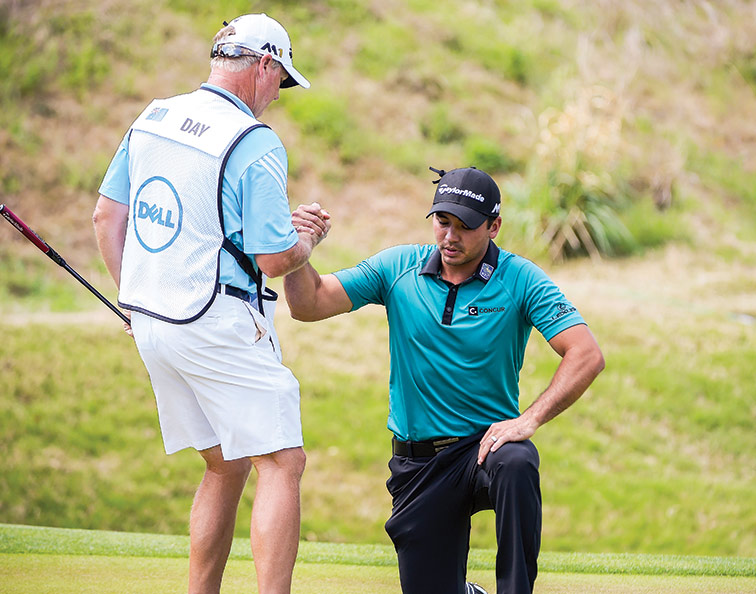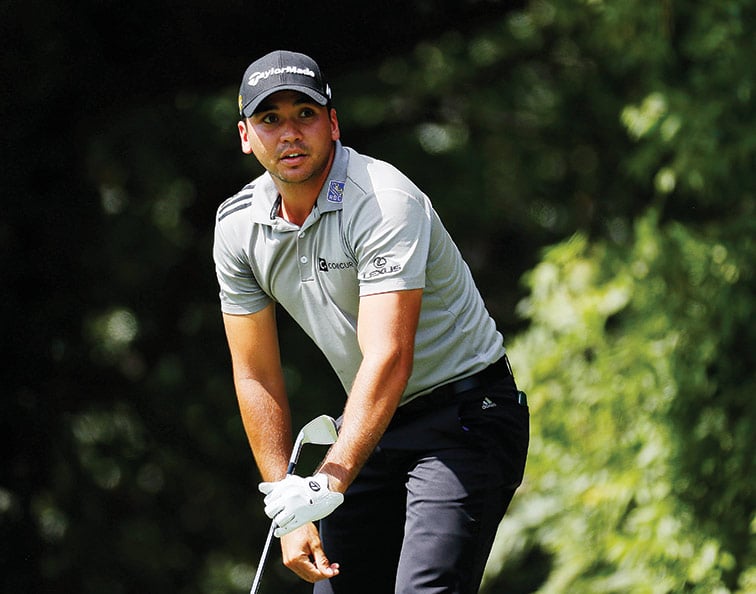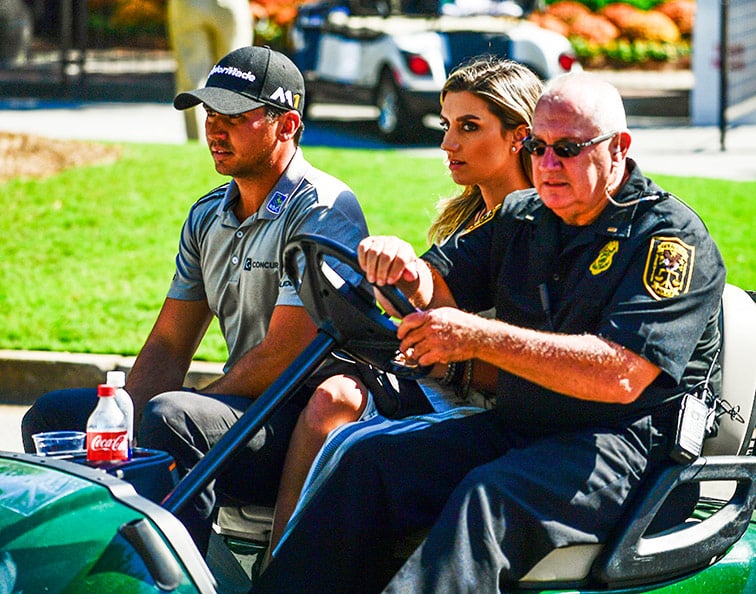In the wake of the world No.1’s latest injury setback, our experts examine the causes of Jason Day’s back issues, how to fix them and just how long he’s got left in the game if he doesn’t address the problem properly.
IF YOU keep an eye on the world of professional golf, you will have been shocked, disappointed and empathetic to see Jason Day withdraw from the Tour Championship. His debilitating back injury ended his chances of winning the FedEx Cup and put an abrupt halt on his 2016 season, robbing him of a chance to return to Australia for the first time in three years.
Many golfers wonder why top players sustain such significant and crippling back injuries while under close watch of their coach, medical professional and fitness trainer. The tour lifestyle is brutal on the body; the constant stress the body is placed under and the necessary work required to keep the body supple, strong, balanced and refreshed often go underappreciated.

Day mentioned he had let his fitness routine slip a little, and perhaps this contributed on some level to him developing his latest back injury.
I spoke with chiropractor Dr Joshua Nelson, from Sherwood Chiropractic in Brisbane, and heard his perspective on why the injury occurred and what he believed was happening in Day’s body and golf swing.
“Whenever I see a golfer present to my clinic with significant back pain, there are two initial questions I want to understand,” Dr Nelson said. “One, is there an underlying mobility issue such as a stiff joint, tight muscle, or something more serious, such as arthritis, that is not allowing the golfer to make a full turn in an optimal way? Two, does the golfer have adequate strength and stability in the muscles that protect the lower back during the golf swing (predominantly the gluteals and core)?”
For the golf swing to work correctly we need to be able to rotate our body fully. This requires a certain amount of mobility through most of the joints of our body but predominantly our ankles, hips and thoracic spine (mid-back). If there is a lack of movement in one of these key areas, the lower back must compensate and do more work than it is designed to do. This leads to additional stress and strain placed on the joints, ligaments, discs and muscles of the lower back.

Based on the fact Day mentioned he had become a little lax with his fitness routine, I would assume there were some imbalances developing in his body. Evidence for this was in the period before his injury occurred when it was obvious his hip was hiking higher than normal. This rang ‘alarm bells’ for me, as this is usually a protective posture for an underlying disruption in the body’s normal mechanics.
During his swing there was also some lateral shifting of his lower body rather than pure rotation leading to increased stress placed on the ligaments in his right lower back that were injured. Whether this was another protective mechanism for the back or whether it contributed to the cause of the injury is unknown. However, sub-optimal hip rotation like this doesn’t usually end well for a player and the health of their back – especially a player like Day whose body has to deal with such a heavy volume of practice and playing.
Dr Nelson and I agreed, based on our skill sets and experience, that the treatment process for Day would consist of:
• Getting him out of pain and improving any underlying mobility restrictions
• Addressing any strength/stability issues through corrective exercises. This will ensure the injured area has as much protection as possible when swinging in the future.
• Working with Day’s golf coach, Colin Swatton, and fitness trainer, Cornel Driessen, in order to ensure minimal strain is placed on his lower back during his golf swing. The new mechanics would need to be integrated into his swing to ensure the mechanics that were causing him problems were eradicated and replaced with biomechanically more sound ones (i.e. better hip rotation rather than lateral shifting).

Day will have learnt a lot from this injury, notably the importance of regular physical preparation and recovery. I believe Day will not allow himself to have a lapse in his training regime again and as a result will avoid any severe injuries in the future.
Back injuries are so common among golfers. As Dr Nelson mentioned, in many cases, back injuries are a result of trying to compensate for rotation because the body doesn’t possess the capabilities to do so functionally.
Our advice to all golfers is to lay your foundations properly. Just because you are not in pain now does not mean that your body is healthy and physically balanced.
We suggest you make sure your body has the adequate levels of flexibility and strength to achieve the positions of the golf swing. This will avoid injury (and the potentially long rehabilitation process that comes with it) and will ensure your longevity in the game.
• Lauren Sanft is a Titleist-certified fitness instructor, director and master trainer at Golf Fitness Co.
Visit laurensanft.com.au




